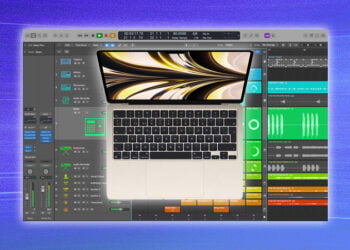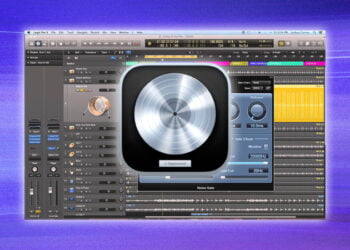Logic Pro X is one of the most powerful, professional music production programs available today.
Its vast array of features and tools allow producers and musicians to take their music to the next level.
As such, producers are often looking to make the most out of Logic Pro X by utilizing some of its more advanced features, such as the Quick Sampler.
Quick Sampler is a powerful tool that lets you easily sample audio files, either from an audio file or from an external source such as a microphone or other audio interface device.
In this blog post, we will discuss how to get Quick Sampler in Logic Pro X and how to use it to create amazing samples for your music.
Select the Software Instrument of your choice from the Library
After opening Logic Pro X, select the ‘Software Instrument’ option from the Library.
This will take you to the library of available software instruments.
Once you have found the instrument you would like to use, select it and drag it into the workspace.
This will create a software instrument track in the main window.
Now that you have the software instrument of your choice in place, you can easily get Quick Sampler in Logic Pro X.
Set the Key Range you want to sample
Before you begin sampling, you must set the key range you want to sample.
To do this, select the Sample tab at the top of the Quick Sampler window.
Then, use the Low Note and High Note fields to set the range of keys you want to sample.
The Low Note field sets the lowest key you want to sample and the High Note field sets the highest key.
Make sure to choose notes that your instrument can cover; otherwise, you may get unexpected results.
Once you’ve set the note range, click OK.
You’re ready to start sampling!
Select the Output Mode
Once you have chosen a Quick Sampler instrument, you can then proceed to select the output mode.
This setting determines which channels the sample will be outputted to.
You can select from the Stereo Out, Multi Out, or Surround Out options.
The Stereo Out option is the default setting and will send the sample to the main stereo output of your system.
The Multi Out option will send the sample to multiple outputs, which are determined by the selected Quick Sampler instrument.
Finally, the Surround Out option will send the sample to a surround-enabled output.
Make sure to adjust the output mode according to your desired sound.
Choose the Tempo of your Sample
The fourth step in getting a quick sampler in Logic Pro X is to choose the tempo of your sample.
This is important because certain effects, such as a compressor, can respond differently to different tempos.
Before you begin working on your sample, decide on your desired tempo and make sure that the project’s tempo setting matches.
You can also adjust the tempo of your sample from the region menu.
Once you have the tempo set, you’re ready to move on to the next step.
Enable Loop Mode
Once you’ve selected Quick Sampler as your instrument, you can enable Loop Mode in order to create a seamless loop of your audio sample.
To enable Loop Mode, click the “Loop” icon on the Quick Sampler interface.
A yellow line will appear indicating the beginning and end of the loop.
You can adjust the loop length by clicking and dragging the yellow line’s endpoints to your desired length.
Once you’ve set the loop length, click the “Enable Loop” button in the bottom-right corner of the Quick Sampler interface.
Your audio sample will now loop seamlessly.
Set the number of bars for your sample
The number of bars in your sample is an important aspect to consider when using Quick Sampler in Logic Pro X.
To set the number of bars for your sample, open Quick Sampler and navigate to the Settings tab.
Under the Sampling section, select the “Number of Bars” dropdown and select the desired length of your sample.
Once the desired length is selected, your sample will have the desired number of bars.
Record your sample
Record your sample. Once you have chosen your sample and made the necessary adjustments, you are ready to record.
Set the record level and make sure the track is armed for recording.
If you have a MIDI track, you will need to make sure the MIDI track is set to the correct input for recording.
Once the settings are set, you can hit the record button to capture the sound of your sample.
After recording, you can play it back to make sure everything is correct.
Once you are satisfied with the result, you can move on to the next step.
Finalize the Sample in the Sample Editor
Once you have completed creating your sample, you will need to finalize it in the Sample Editor.
To do this, select the sample you want to edit, and then click the Sample Editor tab at the top of the screen.
Here you will be able to adjust the sample’s volume, panning, tuning, and other parameters.
You can also add effects such as delay and reverb to the sample.
Once you are satisfied with your settings, click the Save icon at the top-right of the screen to save the sample.
Conclusion
In conclusion, learning how to get quick sampler in Logic Pro X is a great way to add samples to your music production.
It’s easy to use, powerful, and provides you with the tools you need to create great sounding music.
With the built-in sampler, you can quickly and easily add samples to any project, allowing you to create truly unique tracks.
With a little practice and exploration, you’ll be able to use quick sampler quickly and efficiently.






















